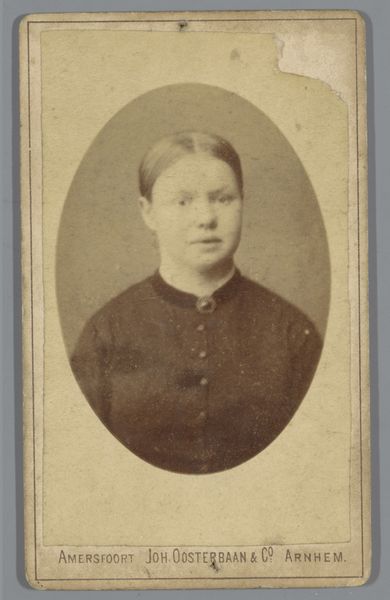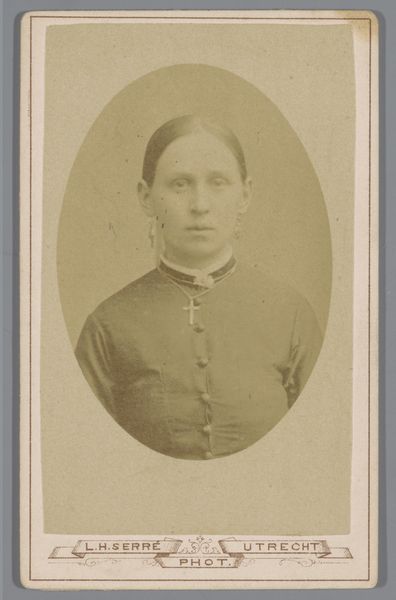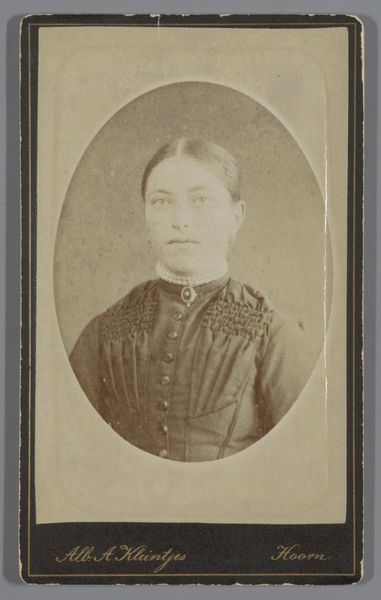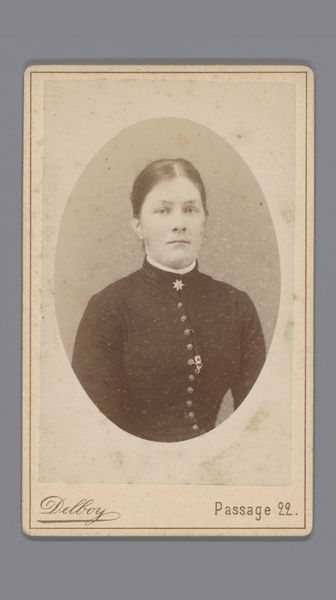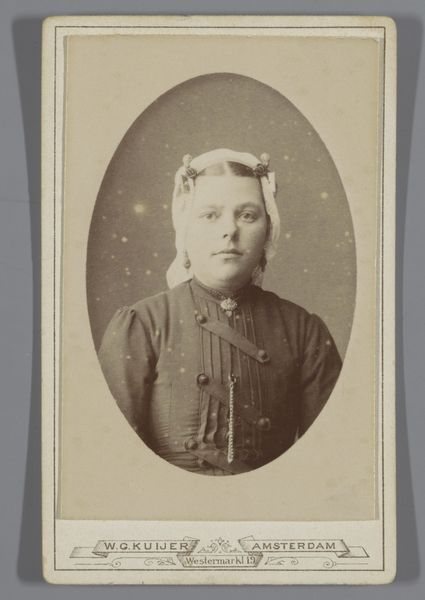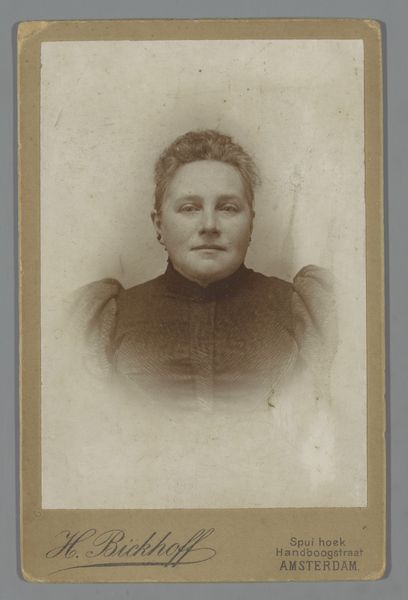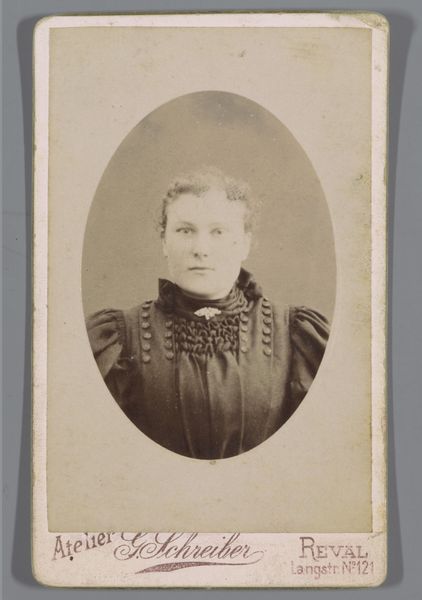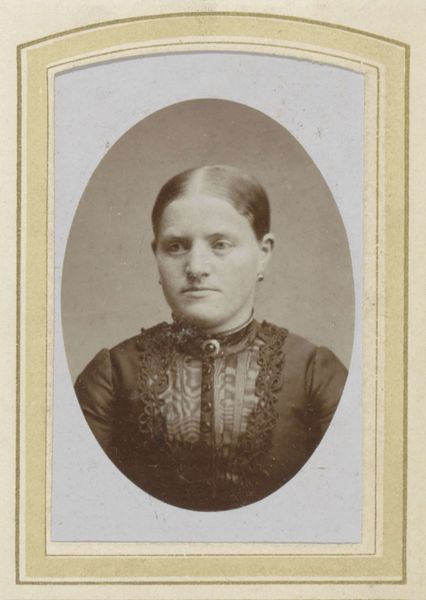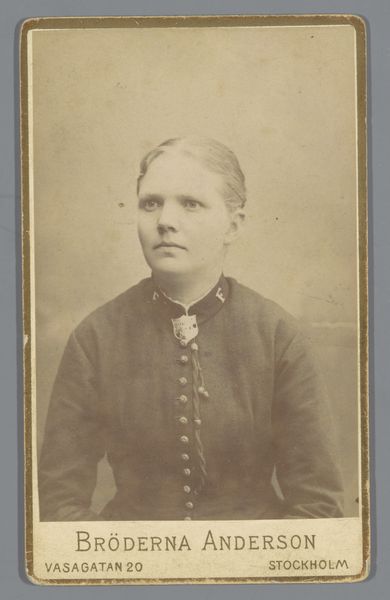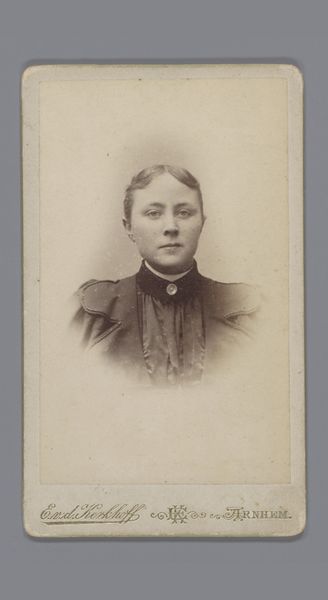
paper, photography, gelatin-silver-print, albumen-print
#
portrait
#
aged paper
#
paper
#
photography
#
portrait reference
#
framed image
#
gelatin-silver-print
#
paper medium
#
albumen-print
Dimensions: length 104 mm, width 64 mm
Copyright: Rijks Museum: Open Domain
Curator: Before us, we have an albumen print—a photographic process popular in the late 19th century—titled "Portret van een onbekende vrouw" or "Portrait of an Unknown Woman," created sometime between 1886 and 1908 by H. van der Zijl. Editor: It’s striking, really. There’s something so immediate and a bit severe in her gaze. The oval format almost makes it feel like a miniature, but her expression suggests something monumental. Curator: Albumen prints were usually produced on a paper base coated with egg white, creating that smooth surface ideal for detail. Given the popularity of this medium in the late 19th century, we have to consider the portrait's original function. Was it a personal memento, a studio offering for commercial consumption, or perhaps something else? These framed photographs had quite a presence in middle-class interiors, didn't they? Editor: Precisely! These types of portraits democratized image production, allowing a wider social spectrum to participate in visual culture. But look at the details of her attire; the high collar, the brooch. How do these items speak to the social expectations placed upon women during this era? Was this a carefully crafted performance for the camera, aligning her with specific social and cultural ideals? Curator: Definitely a calculated display. Considering how photography was becoming more widespread, and businesses like Van der Zijl were producing images for a growing consumer market, her self-presentation had financial implications. The quality of the materials and her styling contributed to the overall perceived value, affecting her status and desirability, right? Editor: Indeed. We must also consider the distribution networks – galleries, local shops – places where this portrait would have gained a public life. I wonder if it were part of a larger series showcasing "types" or ideals of femininity. And what role does the very act of framing play? The physical border emphasizes the separation between her reality and our gaze, underscoring the power dynamics at play. Curator: So, from albumen to consumption, the physical to the social, this portrait opens a fascinating window into how photography impacted visual culture. Editor: Yes, it's about this woman, but more broadly, it gives us insight into an era grappling with shifting notions of identity and representation.
Comments
No comments
Be the first to comment and join the conversation on the ultimate creative platform.
